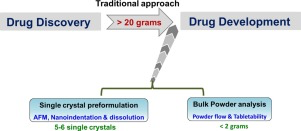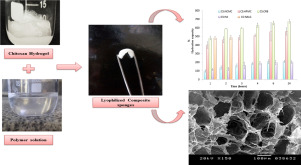- Home
- Blog
- News
- Basics
- Sources
- Agencies, Regulatory & Organisations
- CERSI Excipients Browser
- Excipient Report
- Excipient DMF List
- EXCiPACT Certified Companies
- Excipient Documentation
- Excipient EINECS Numbers
- Excipient E-Numbers
- FDA Inactive Ingredient List
- FDA GRAS Substances (SCOGS) Database
- IPEC Americas
- USP - U.S. Pharmacopeia
- Definitions
- Whitepapers / Publications
- Supplier
- Services
- Media
- Events
- 1st pharmaexcipients Poster Award
- Event Calendar
- Events featured by pharma-excipients
- 4th Annual Formulation & Drug Delivery Congress
- DDF Summit
- ExcipientFest Americas
- ExcipientFest Asia
- Global CompliancePanel
- International Conference and Exhibition on Pharmaceutics & Novel Drug Delivery Systems
- Formulation & Drug Delivery USA Congress
- Laboratory Medicine 2018
- Making Pharmaceuticals Europe
- Making Pharmaceuticals Exhibition
- Pharma Integrates
- PharmaExcipients China @CPhI China
- TTC Technology Training Center
- Jobs
- Online Sourcing
- Contact
27. July 2018
Co-amorphous drug delivery systems are attracting increasing attention in the pharmaceutical field, due to their promising potential to improve the solubility and bioavailability of poorly water-soluble drugs. In this study, three organic acids, namely benzoic acid, malic acid and citric acid and , were investigated as co-formers for the weakly basic drug carvedilol. It was hypothesised that the mono-, di- and triprotic nature of the organic acids could result in co-amorphous salt formation...
15. June 2018
This study explores the influence of different synthesis methods and drying conditions in the preparation of sodium alginate-derivate xerogels presenting interesting disintegrant functionalities. Xerogels containing alginic acid (AA) or calcium alginate (CaA) and a mixture of both, AA/CaA, were isolated using two different drying methods oven and rotary evaporation. AA showed the best wettability behavior, in contrast to the rigid crosslinked CaA structure which showed a limited rate of water...
27. May 2018
A systematic assessment of key material attributes of active pharmaceutical ingredients (APIs) using minimal material approach is illustrated at the particulate level and bulk level. At a bulk level, flowability improvement of an API through crystal habit manipulation is exemplified. The impact of crystal structures and particulate properties (crystal habit and crystal size) on their mechanical behaviour were addressed by measuring powder tabletability. Bulk powder flow and tabletability were...
06. May 2018
In the course of application and modernization of buccal dosage forms, lyophilized sponges for transmucosal drug delivery symbolize one of the most attractive approaches. Chitosan (CS) has been extensively investigated as a forming material of different buccal dosage forms including sponges. However, CS-based buccal delivery systems suffer from many limitations like weak adhesion strength and poor tensile properties. So, for the first time, the current study focused on the polymer blending...
11. January 2018
The purpose of present research work was to develop mucoadhesive microparticles of Zaleplon for nasal delivery with the aim to avoid hepatic first-pass metabolism, improve therapeutic efficacy and enhance residence time in the treatment of insomnia.
18. October 2017
In the drug delivery area, versatile therapeutic systems intended to yield customized combinations of drugs, drug doses and release kinetics have drawn increasing attention, especially because of the advantages that personalized pharmaceutical treatments would offer.
19. September 2017
Fluid bed coating offers potential advantages as a formulation platform for amorphous solid dispersions (ASDs) of poorly soluble drugs, being a one-step manufacturing process which could reduce therisk of phase separation associated with multiple step manufacturing approaches. However, the impact of the physicochemical nature of carrier spheres on the properties and drug release from the ASDshas not been studied in detail. In this work, tartaric acid (TAP) and microcrystalline cellulose (CEL)...
16. September 2017
Results of experiments on prolonged release of paracetamol from polymer matrix tablets with cross-linked poly(acrylic acid) Carbopol®Ultrez 21 as the prolonging polymer were reported. The effects of factors such as tableting technology, type of alkaline agent, and ratio of Carbopol® to alkaline agent on paracetamol release kinetics were studied. It was established that matrices prepared by wet granulation had the best potential for prolonging the release. The ratio of Carbopol®to alkaline...
28. April 2017
Chemical Exchange Saturation Transfer (CEST) approach is a novel tool within magnetic resonance imaging (MRI) that allows visualization of molecules possessing exchangeable protons with water
10. April 2017
Abstract The aim of this study was to develop esomeprazole magnesium (EMZ-Mg) enteric-coated pellets and pellet-based tablets, as well as to investigate the effects of pellet size and compression method on acid tolerance, content uniformity, compressibility, and stability of preparations. This study used two types of pellet cores, namely, microcrystalline cellulose (MCC) core with a particle size of 150–300 μm and sucrose core with a particle size of 600–700 μm. Enteric-coated pellets,...







